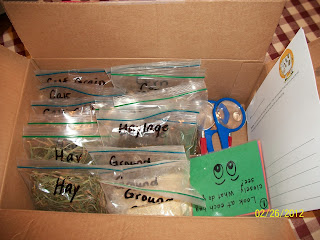This is a fantastic lesson to use when teaching about
taste buds. Children get to taste
different foods and talk about if it’s salty, sweet, sour, or bitter. Moreover, I like how most of the worksheet
questions do not have right and wrong answers. Instead, children are allowed the opportunity
to experiment and back up their answers with evidence and strong reasoning.
Title –
Taste Test
By – Catelin Welch
Primary Subject – Science
Grade Level – 3rd
Standards:
Science 5B – Observe a
simple system and describe the role of various parts.
Science 2B – Collect information by observing and measuring.
Learning
Objectives:
·
By the end of the activity, the students will be able to determine
sweet, salty, sour, and bitter tastes.
·
By the end of the activity, the students will be able to determine
what lemon juice, sugar, and water will make by experimentation.
·
By the end of the activity, the students will be able to fill out
the worksheets successfully.
Materials
Needed:
·
lemon juice,
·
vanilla,
·
salt,
·
sugar,
·
cups,
·
water,
·
little spoons,
·
pencils,
·
information about sense of taste and taste buds and
·
worksheet.
Pre-Activity
Preparation:
·
Prepare lesson on taste buds
·
Prepare worksheet
·
Gather materials
Transition:
·
Move desks into groups of three. Explain to children to be careful
not to spill and if they do, tell them to clean it up.
Procedure:
·
Discuss the terms sweet, salty, sour, and bitter.
·
Discuss taste buds.
·
Discuss “lye” bumps.
·
Line up the cups, label them, and separately put the ingredients in
the correctly labeled cups.
·
Put on each groups desk:
·
3 lemon juice cups,
·
3 sugar cups,
·
3 salt cups,
·
3 vanilla cups, and
·
3 cups of water.
·
Pass out napkins, spoons, worksheets and pencils.
·
Read the directions on the worksheet aloud.
·
Instruct students to begin following their worksheet.
WORKSHEET QUESTIONS:
1.
What do you think vanilla will taste like? (Sweet, salty,
sour, or bitter)
Were you correct? What does it really taste like?
2.
Which one is sweet, vanilla or sugar?
3.
Salt and sugar look the same, but do they taste the same?
4.
What happens when you mix a little salt and sugar together?
5.
What happens when you mix lemon juice, water, and sugar together?
6.
Which is your favorite, sweet, salty, sour, or bitter?
7.
Which is your least favorite?
8.
Do you have more sweet taste buds or sour taste buds?
9.
If you eat a dill pickle which part of your mouth will tell you that
it’s sour, your front, back, or middle?
10. What makes the little bumps
(lye bumps) on your tongue?
11. Who do you think has
more taste buds? (Kids, Adults) (Boys, Girls)












